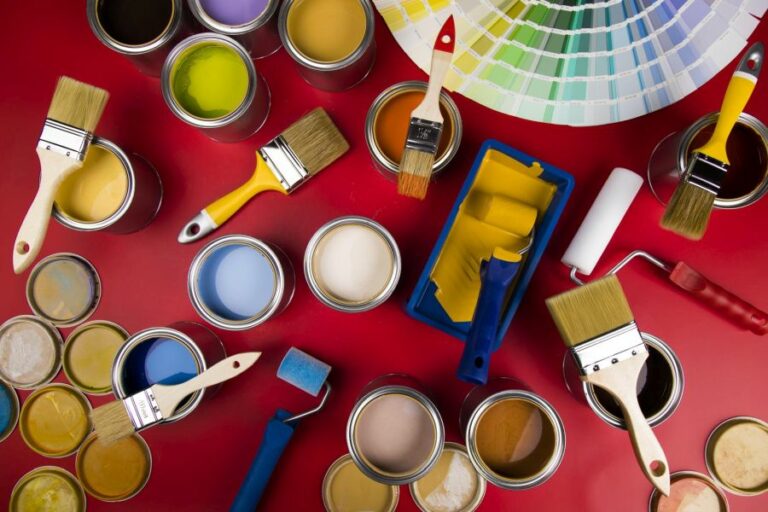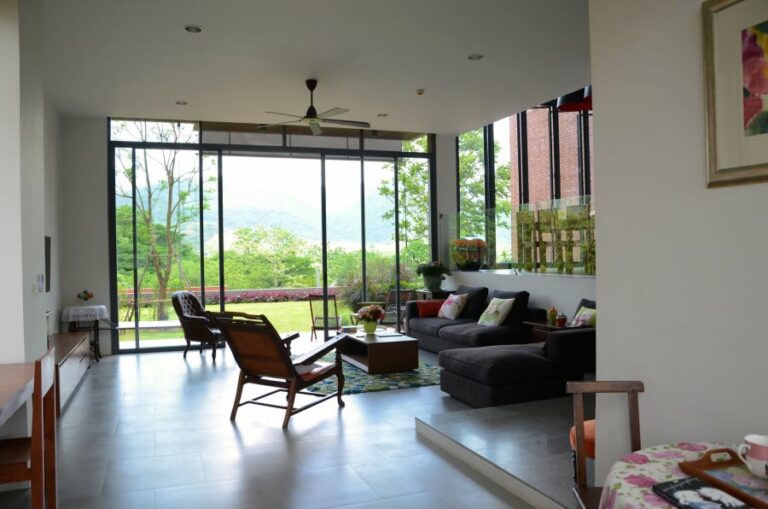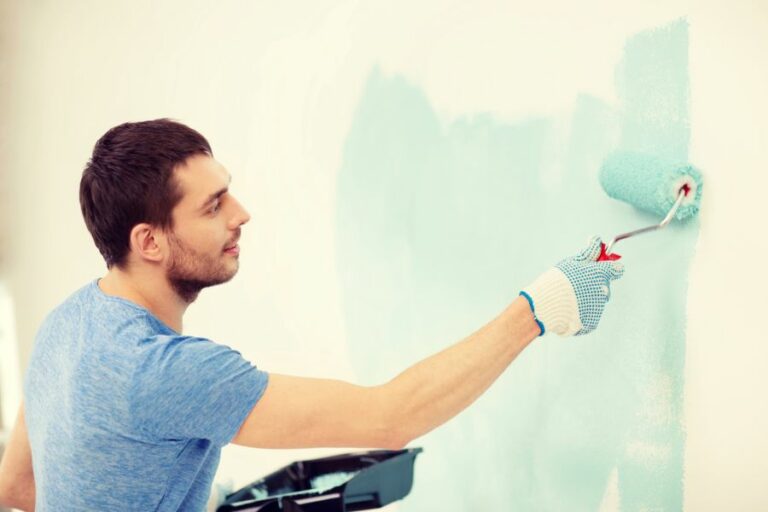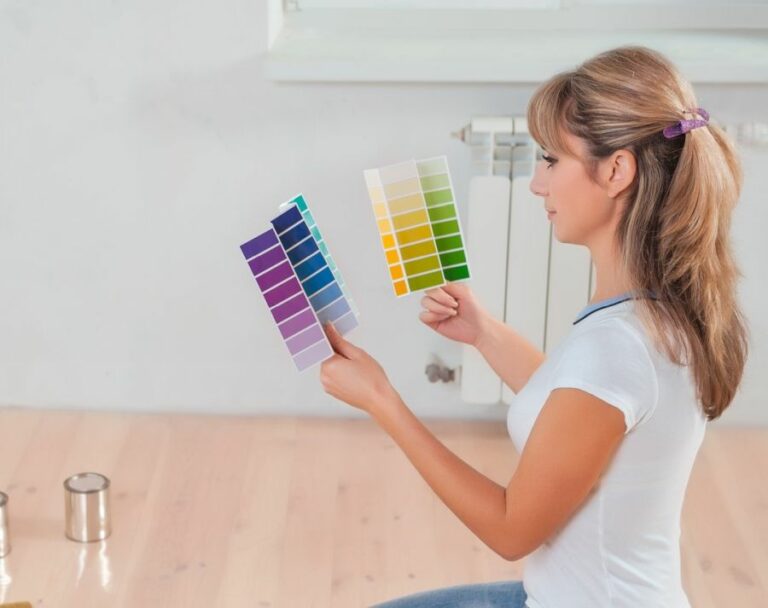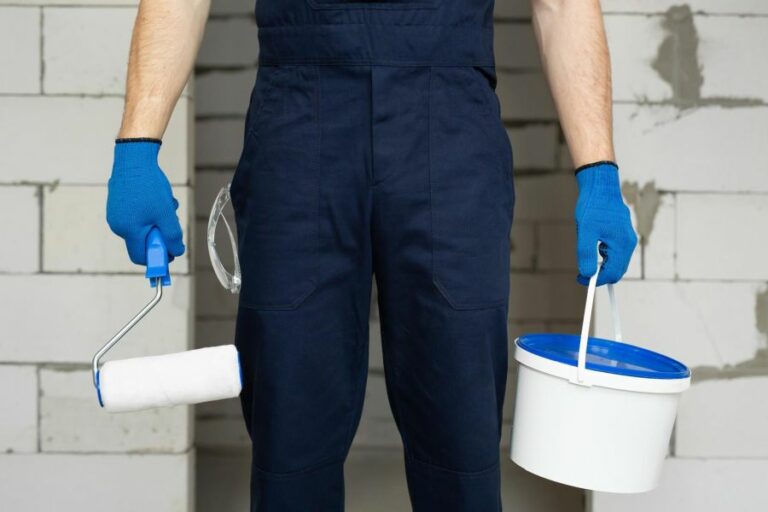Creative Chalk Paint Ideas For Indoor Furniture. What Pros Say
Are you bored with your indoor furniture’s plain look and eager to give them a unique and vintage makeover? Well, you’re in luck, as we have some pretty amazing creative chalk paint ideas that would absolutely transform your worn-out pieces into eye-catching conversation starters.
Creative chalk paint ideas for indoor furniture:
Creative chalk paint ideas for indoor furniture include creating a distressed look, layering different colors, using stencils to add unique designs, and achieving a whitewashed effect. Chalk paint offers a versatile and durable matte finish and works well on various surfaces without primer or sanding, making it ideal for transforming furniture into stylish focal points.

Ready to breathe new life into your old furniture? Discover fresh and innovative chalk paint ideas that will transform your tired pieces into stunning, unique works of art. Keep reading and unlock your creativity with these inspiring designs!
Contents
- 1 Innovative Chalk Paint Designs for Interior Furnishings
- 2 Achieving a Stunning Chalk Paint Finish on Furniture
- 3 Creating a Contemporary Aesthetic with Chalk Paint
- 4 Drawbacks of Using Chalk Paint for Furniture
- 5 Is Priming Necessary Before Applying Chalk Paint on Furniture?
Innovative Chalk Paint Designs for Interior Furnishings
Chalk paint is a versatile and unique paint that many people choose to use on their indoor furniture. This special type of paint creates a beautiful, matte finish and has the added benefit of being able to adhere to virtually any surface without the need for primer or sanding.
• Choosing the Right Chalk Paint
Before we dive into specific ideas, it is important to choose the right type of chalk paint for your project. There are many different brands available, but some of the most popular ones include:
- Annie Sloan Chalk Paint
- Rust-Oleum Chalked Paint
- Magnolia Home Chalk Style Paint
Each brand has its own unique formula and may produce slightly different results when applied to your furniture. But, one essential aspect to consider when selecting your chalk paint is its color palette. Make sure you choose a color that complements your room’s interior and matches your design style.
• Using Chalk Paint to Create a Distressed Look
A popular technique for using chalk paint on indoor furniture is to create a distressed, vintage look. This style can work incredibly well on pieces with a lot of detail or intricate carving work, such as dressers, buffets, and armoires.
The process involves applying at least two coats of paint, allowing each coat to dry fully and then gently sanding the surface to reveal the underlying wood in some areas.
The best part about this method is that you can personalize the level of distress according to your preferences. If you want a more modern look, opt for minimal distressing, while more rustic styles can be achieved with heavier distressing.
• Layering with Chalk Paint
Another creative way to use chalk paint on indoor furniture is to layer different colors to achieve a unique, multi-dimensional look. This technique works exceptionally well on items with raised edges or carved details, such as tables, chairs, or bookcases.
To try this method, start by applying one color of chalk paint as a base layer. Once that is dry, add a second color on top, focusing on the raised or carved areas. Then, gently sand the surface so that the base color becomes visible in some spots, creating a two-tone effect.
Layering can also involve using different shades of the same color to create a subtler and more sophisticated look.
• Stenciling with Chalk Paint
Another creative idea for using chalk paint on indoor furniture involves using stencils to create unique designs or patterns. This method can be used on almost any type of furniture but works particularly well on flat surfaces like tabletops, chair seats, or dresser fronts.
To start, choose a stencil design that complements your room’s style or theme. Then, apply your base layer of chalk paint and allow it to dry completely. Once it is dry, position your stencil and use a small brush or sponge to apply the contrasting chalk paint over the stencil.
Carefully remove the stencil, and your design should be visible on the furniture.
• Creating a Whitewashed Effect
Whitewashing is a popular technique that can be used with chalk paint to create a light, airy feel for your indoor furniture. This method typically uses white or off-white paint and works best on pieces made from natural wood, such as tables, chairs, or benches.
To achieve a whitewashed effect, start by diluting your chosen white chalk paint with water until it reaches a consistency similar to milk. Then, use a paintbrush to apply the watered-down paint to the entire piece of furniture.
While the paint is still wet, use a clean, damp cloth to wipe away some of the paint, allowing the wood grain to become visible. The result should be a soft, whitewashed finish that adds a touch of elegance to your space.
• Final Thoughts
Using chalk paint on your indoor furniture can open up a world of creative possibilities. With its versatile nature and ability to adhere to various surfaces, the options for transforming your furniture into unique, eye-catching pieces are endless.
From distressed vintage styles to modern layered looks, there is a creative chalk paint idea for every design style and preference. With a little imagination and some DIY know-how, your indoor furniture can become a stylish focal point within your home.
No. | Idea | Description |
|---|---|---|
1 | Distressed Look | Create a vintage, distressed look by applying one or two layers of paint, then sanding it down in strategic areas to reveal the wood beneath. |
2 | Two-Tone Furniture | Paint your furniture in two contrasting colors, e.g., paint the body of a dresser in a neutral shade and the drawers in a bolder color for a subtle yet striking look. |
3 | Stencil Patterns | Add unique patterns or designs to your furniture using stencils and paint over the surface to create custom embellishments. |
4 | Ombre Effect | Paint your furniture with an ombre effect by gradually blending one color into another as you go either up or down the piece. |
5 | Color Wash | Create a soft, translucent color overlay on your furniture by diluting paint with water and applying it in thin layers over the existing paint job. |
6 | Chalkboard Surface | Transform a flat surface, like a tabletop or drawer front, into a functional chalkboard surface by painting it with chalkboard paint. |
Achieving a Stunning Chalk Paint Finish on Furniture
Chalk paint is a popular option for giving the furniture a rustic, vintage appearance. It’s easy to apply and can transform a dated piece of furniture into a showstopper. However, there are some tips and tricks you need to know if you want your chalk paint to look good on your furniture.
• Choosing the Right Chalk Paint
The first step to getting a great look with chalk paint is choosing the right product. Many brands offer chalk paint, but not all are created equal. Some of the most popular and reliable options include:
- Annie Sloan Chalk Paint
- Rust-Oleum Chalked Paint
- Valspar Chalky Finish Paint
- KILZ Tribute Chalk Style Paint
These brands have a wide range of colors available, and their formulas tend to provide consistent results that are easy to work with.
• Preparing Your Furniture for Chalk Paint
Before applying chalk paint to your furniture, it’s essential to prepare the surface properly. This will ensure that your paint adheres well and gives you a smooth, professional finish. Follow these steps:
– Cleaning
Using a mild cleaner, remove any dirt, grease, or dust from the furniture. Allow it to dry thoroughly before moving on to the next step.
– Sanding
Gently sand the furniture with 220-grit sandpaper to create a smoother surface and increase the paint’s adherence. You don’t need to remove all the previous finish, just roughen it up slightly. Wipe away any sanding dust with a tack cloth.
– Repairing
If there are any damaged or uneven areas on the furniture, use wood filler to patch them up. Allow the filler to dry, and follow up with another round of sanding to ensure a smooth surface.
• Applying Chalk Paint to Your Furniture
Now that the surface is prepared, you can start applying chalk paint to your furniture. Here are some essential tips for a perfect application:
– Use a High-Quality Brush
A good-quality brush is essential for achieving a smooth, even finish with your chalk paint. Look for a brush with synthetic bristles and a flat, chiseled edge. Brushes specifically designed for chalk paint are also available.
– Allow for Multiple Coats
Chalk paint often requires two or even three coats to achieve full coverage and a smooth, even finish. Be prepared to apply multiple coats, allowing each one to dry fully before applying the next.
– Use the Crosshatch Technique for a Smooth Finish
One of the key techniques for applying chalk paint is using a crosshatch pattern. This involves brushing the paint on in a crisscross pattern, resulting in a smoother finish with fewer visible brush strokes.
This technique is especially useful when working with darker colors, which can show brush marks more readily.
– Sand Between Coats
To achieve an extra smooth finish, gently sand the furniture between coats of chalk paint with fine-grit sandpaper. This will remove any imperfections and ensure that the final coat goes on smoothly.
• Finishing Your Chalk Painted Furniture
Once you’ve applied all the necessary coats of chalk paint and are happy with the coverage, it’s time to finish your furniture. This step is crucial, as it will protect the paint from wear and tear and give it a more polished look.
– Apply a Chalk Paint Wax
Wax is the most common and recommended way to seal chalk paint. It provides a durable finish that’s easy to apply and can be buffed to the desired level of sheen. Clear wax is the most versatile choice, but colored waxes are also available, which can be used to create an aged or distressed appearance.
Apply the wax with a lint-free cloth or a wax brush, working in small sections and removing any excess wax as you go. Allow the wax to dry for at least 24 hours before buffing it to your desired sheen level.
– Consider Other Finishing Options
In addition to wax, there are other finishes available to seal and protect your chalk-painted furniture, such as polyurethane, polycrylic, or even a clear topcoat.
Remember to follow the manufacturer’s instructions for the finish you choose, and be aware that some finishes may alter the final appearance or color of your paint job.
• Conclusion
Chalk paint can be an excellent option for giving your furniture a stylish, vintage-inspired update.
By taking the time to select the right paint, properly prepare your furniture, apply the paint with care, and finish the project correctly, you can achieve a professional-looking result that you’ll be proud to display in your home.
Steps | Description |
|---|---|
1. Clean the furniture | Remove any dirt, dust, or grime from the surface using a damp cloth and gentle cleaner. |
2. Sand the surface | Lightly sand the surface of the furniture to create a smooth base for even paint application. |
3. Apply primer (optional) | If needed, apply a primer to the surface to ensure better adhesion of the chalk paint. |
4. Apply the chalk paint | Choose your desired chalk paint color and apply it to the furniture using a brush or roller, making sure to paint in the same direction as the wood grain. |
5. Apply a second coat (if necessary) | If the first coat doesn’t provide adequate coverage, apply a second coat of chalk paint, allowing time for the first coat to dry. |
6. Distress the furniture (optional) | Using a piece of fine-grit sandpaper, gently sand areas where the paint would naturally wear away over time to achieve a distressed look. |
7. Apply wax or sealant | To protect the paint from wear and tear, apply a clear wax or sealant using a brush or soft cloth. |
8. Buff the wax or sealant | Allow the wax or sealant to dry, then buff it with a soft cloth to create a smooth and appealing finish. |
Creating a Contemporary Aesthetic with Chalk Paint
Chalk paint is a versatile and easy-to-use medium that can give a trendy, modern update to furniture, home decor, and more. Its matte finish and variety of available colors make it a go-to choice for DIY enthusiasts.
• Prepping for the Perfect Paint Job
Before you begin with your chalk paint project, proper preparation is crucial. Ensure your chosen item is clean and free of dirt, oil, or wax. If necessary, lightly sand the surface for better adherence. Always work in a well-ventilated space, and protect floors and surrounding areas with drop cloths or newspapers.
Gather the necessary materials, including chalk paint, brushes, wax or sealant, and any embellishments you wish to add.
Tip: Though many chalk paint brands claim priming is not required, occasionally applying a layer of primer before painting can help achieve a more even, professional result.
• Simple yet Sleek: One-Color Makeover
One of the easiest ways to create a modern look with chalk paint is by sticking to a single color across the entire piece. Choose a bold hue or a neutral tone that complements the rest of your room’s color palette.
Apply thin, even coats of paint, allowing each layer to dry before applying the next; this may require two or three coats for full coverage. Once the paint is thoroughly dry, apply a coat of clear wax or sealant for protection and to enhance the matte finish.
Recommendation: For a more contemporary effect, consider using a high-quality synthetic paintbrush or even a roller. These methods help achieve a smoother, more even application without brush marks.
• Two-Tone Chic: Modernizing with Contrast
Introduce a modern vibe to a piece of furniture by incorporating contrasting colors. Begin with the primary color, following the simple one-color makeover technique. For a clean line where the colors meet, use painter’s tape.
When the first color is dry and the tape properly placed, paint the selected area with the contrasting color. Remove the tape while the paint is still slightly wet to ensure a crisp, perfect line.
Recommendation: For an ultra-modern look, opt for a monochromatic contrast, such as pairing a light gray with a darker charcoal shade.
• Sleek and Subtle: Color-Blocked Accents
Adding simple color-blocked accents can add a touch of modernity to an otherwise plain or traditional piece of furniture. Choose a subtle hue for the primary color (such as cream or light gray), and a complementary, bolder shade for accent areas.
Common places to add color-blocked accents include drawer fronts, interior shelving, or the legs of tables or chairs.
Recommendation: Remember to consider the surrounding decor when choosing your bold accent color so that it works together seamlessly.
• The Power of Patterns: Geometric and Clean-Lined
Elevate the style of your chalk-painted piece with clean, geometric patterns. Select a base color and apply as mentioned previously. Once dry, use painter’s tape to create your desired pattern, ensuring the tape is securely applied to avoid any paint seepage.
Apply the contrasting color within the taped-off sections and carefully remove the tape for a sharp finish.
Tip: Try mixing patterns (such as stripes and triangles) on different surfaces of the piece to create depth and visual interest.
• Finishing Touches: Hardware and Embellishments
Lastly, consider updating the hardware on your newly-painted piece. Replace outdated knobs, handles, and other fixtures with modern, sleek options that enhance the overall appeal. Small decorative accents like stenciled patterns, decals, or metallic details can also amplify the contemporary feel.
Recommendation: For a cohesive look, choose hardware and embellishments in a single color family, such as matte black or brushed nickel.
In conclusion, the possibilities are endless when it comes to achieving a modern look with chalk paint. The key is to use clean lines, bold colors, and bold contrasts to create a statement.
With a little creativity and effort, you can breathe new life into older pieces and create a contemporary space that reflects your style.
Step | Description |
|---|---|
1 | Choose a piece of furniture or an item to paint. |
2 | Prepare the surface by cleaning it thoroughly and sanding any rough spots. |
3 | Pick a chalk paint color that complements your modern design style. |
4 | Apply a thin, even coat of chalk paint with a brush or roller, allowing it to dry completely. |
5 | Apply a second coat if necessary for coverage, again allowing it to dry completely. |
6 | Use fine-grit sandpaper to gently distress the edges and details for a modern, worn-in look. |
7 | Apply a clear wax or sealant to protect the paint and add a soft, subtle sheen. |
8 | Accent your painted piece with complementary modern decor and furniture. |
Drawbacks of Using Chalk Paint for Furniture
• Limited Color Options
One of the primary drawbacks of chalk paint is the limited range of colors available. Unlike regular interior or exterior paints, chalk paint colors tend to be muted and limited to pastels and vintage-style shades.
This may not be suitable for everyone’s tastes, particularly if there is a preference for bold or bright colors. In contrast, other types of paint offer a vast array of colors, making it easier to find the perfect shade for any project.
• Price
Chalk paint can be quite expensive compared to other types of paint available in the market. The high price tag is often a result of the unique formulation and ingredients used in chalk paint, as well as the smaller scale of production.
This can be a significant disadvantage for those on a budget or working on a large-scale project where costs can quickly accumulate.
• Chalky Finish
As the name suggests, chalk paint dries to a matte finish with a chalky texture. This finish might not appeal to everyone, particularly in instances where a glossy or semi-gloss finish is desired.
While some may find the chalky finish charming or vintage-looking, others might consider it to be lackluster or dull in certain settings.
• Prepping Requirements
While chalk paint proponents often highlight that no primers or sanding are necessary for most surfaces, this may not always be the case. Certain surfaces may still require preparation work, such as cleaning or sanding, to ensure the paint adheres properly and provides a smooth, even finish.
Skipping these steps can result in a less-than-perfect paint job, which detracts from the finished product’s appearance.
• Durability Concerns
Chalk paint is known for its ability to distress easily, which can be a desired effect when going for a shabby-chic or antique appearance. However, this means it is typically less durable than other types of paint and is more prone to chipping and wear over time.
In high-traffic areas or on surfaces that receive more wear and tear, this can be a significant disadvantage.
• Sealant Requirements
To maintain the condition and appearance of chalk paint, it is often necessary to apply a sealant or wax. This step provides extra protection against damage, staining, and fading. However, this also adds an additional cost and labor to the project, which may not be ideal for some.
• Application Challenges
Chalk paint can be challenging to work with due to its thick, chalky texture. This can make it difficult to achieve smooth, even coverage, particularly for inexperienced painters or those who may be less familiar with this type of paint.
Additionally, the thickness of the paint can sometimes result in visible brush strokes on the finished product if not applied with proper technique.
• Less Eco-friendly
Chalk paint is typically water-based paint, and the primary ingredient is calcium carbonate. According to the US Geological Survey, the mining of calcium carbonate can have a negative impact on the environment, including deforestation, erosion, and loss of wildlife habitats.
Therefore, using chalk paint can be less environmentally friendly compared to other types of paint with more sustainable ingredients.
• Final Thoughts
In conclusion, while chalk paint has its benefits and can deliver desirable results for certain projects, it also has several drawbacks that can make it unsuitable for some applications.
Factors such as limited color options, price, durability concerns, and potential environmental impact are crucial when determining whether chalk paint is the right choice for a project.
Finally, it is essential to weigh the pros and cons of chalk paint carefully before committing to its use to ensure satisfaction with the end result.
Is Priming Necessary Before Applying Chalk Paint on Furniture?
• The Basics of Chalk Paint
Chalk paint is a versatile and popular type of paint used for painting furniture and other surfaces. One of the main attractions of using chalk paint is that it requires minimal preparation work, providing excellent coverage while adhering well to a variety of materials.
But the question often arises, “Do I need to prime furniture before using chalk paint?”
• To Prime or Not to Prime: That is the Question
The short answer is: it depends. Priming is not strictly necessary for every project when using chalk paint. However, there are certain situations where priming can be beneficial. Below, we have outlined some scenarios where priming your furniture before using chalk paint might be a good idea.
– When to Consider Priming
1. When Painting Over Dark or Bright Colors
If the furniture piece you are planning to paint has a dark or bright color, applying a primer can help minimize the number of coats of chalk paint needed to achieve full coverage.
The primer will create a barrier that prevents the original color from showing through the chalk paint, allowing for a more uniform final result.
2. When Painting Over a Glossy Surface
Chalk paint adheres well to most surfaces but can struggle to stick to very glossy or smooth finishes. Priming these surfaces with a bonding primer can create a better surface for chalk paint to adhere to, making the final result more durable and long-lasting.
3. When Painting Over Raw Wood
If you are painting unfinished wood, applying a primer can help seal the porous material, preventing the chalk paint from soaking in and requiring multiple coats to achieve an even finish.
Additionally, using a primer on raw wood can help block any knots or resinous areas of the wood from bleeding through the paint in the future.
4. When Using a Light-Colored Chalk Paint
When using light-colored chalk paint, priming your furniture can help prevent any staining or discoloration from the underlying material from impacting the final color. This can be especially important when painting antiques or previously stained pieces.
– When Priming Might Not Be Necessary
If the furniture piece you are painting is already painted or has a non-glossy finish, priming may not be necessary. Chalk paint is designed to adhere well to most surfaces, and its thick consistency can provide excellent coverage with just a couple of coats.
Additionally, the distressed and vintage look often associated with chalk paint can be more easily achieved if the paint is applied directly to the furniture without priming.
• Tips for Success with Chalk Paint
Here are some tips to consider when using chalk paint on furniture:
1. Clean the Surface Properly
Before applying chalk paint, it’s essential to properly clean and degrease the surface of the furniture piece. Use a mild detergent and warm water to wipe down the surface, ensuring there is no dirt, dust, or grease that could prevent the paint from adhering well.
2. Test for Adhesion
Before diving into painting an entire piece, it may be wise to do a test patch on an inconspicuous area to check for adhesion. Apply a small amount of chalk paint, let it dry, and check how well it sticks to the surface.
If the paint can be easily scratched off or doesn’t adhere well, it may be necessary to prime the surface.
3. Use Quality Brushes
Using high-quality brushes can make a significant difference in the final result of your chalk paint project. Choose brushes that feel comfortable in your hand with soft, good-quality bristles. This will help to achieve a more even and smooth finish on your furniture.
4. Seal the Paint
Lastly, it’s essential to seal the paint once it’s fully dry to protect the surface from damage and wear. A clear wax or water-based topcoat can be applied to the painted surface, depending on your desired look.
• To Prime or Not to Prime: The Final Verdict
While priming furniture before using chalk paint is not always necessary, there are certain situations where it can be beneficial. By considering the specific needs of your project and following the tips outlined in this article, you can achieve a beautiful and long-lasting result with chalk paint.
Check out this helpful resource on chalk paint by Annie Sloan, the inventor of chalk paint, for additional tips and techniques.


